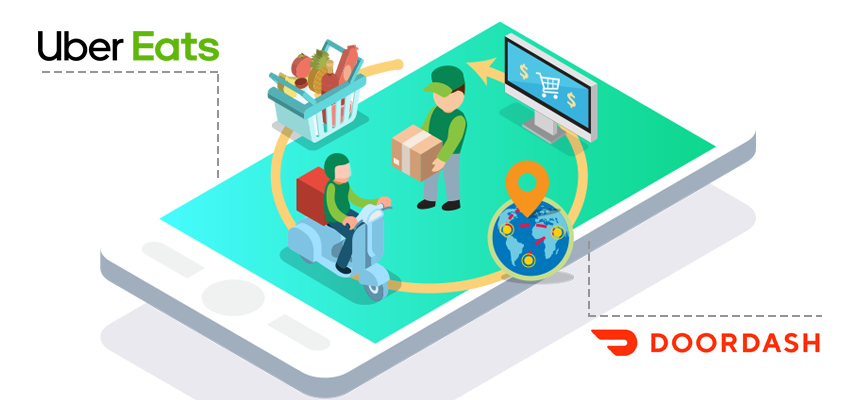Today, the entire world is united against battling the COVID-19 pandemic that has affected more than 1.4 million people and has claimed over 82,000 lives so far around the globe. It has not only caused a total lockdown of several cities across many countries but also has forced major work and lifestyle changes for millions of individuals and businesses in the view of school closures, travel bans, social distancing and recommendations not to gather in large numbers for curbing the virus spread. Amidst all this, many people and businesses turned towards technology in the form of digital tools in the pursuit of normalcy, at least to the closest to what we can have currently. The pandemic has equally compelled us to digitally transform our workplaces and educational institutions to operate effectively.
For today’s businesses, it’s imperative to successfully adopt and keep up with the technology by accelerating digital transformation not only to survive but also to stand out in the competition. Here’s how many of the industries and businesses have coped up with the new situation by transforming their processes digitally.
Work From Home Ability in Corporates
The 2019 National Compensation Survey (NCS) from the Federal Bureau of Labor Statistics states that only 11% of the workers in the US had access to flexible working schedules before the pandemic. While some large organizations such as Twitter encouraged work from home culture for their employees and other companies including JPMorgan and Google were creating remote working policies in the event of any such need, many others were not equipped with the necessary infrastructure to provide this facility without compromising the quality and quantity of work done from their office premises. However, the unprecedented lockdown caused by the pandemic has forced organizations, even the most stringent ones, to allow their staff to work from home for the continuity of their business operations.
During the rigid lockdown in Chinese cities, the government and many companies encouraged millions of people to stay home and experience the remote working culture. While some organizations will eventually go back to their rigid working policies in the office premises, some of the firms may realize the remote work culture benefits associated with cost and business continuity and may continue to offer the facility or use the experience to fine-tune their processes to accommodate the culture if the need arises again in the future.

Education
With the pandemic spread, universities and schools were amongst the first ones who embraced virtual learning options. Many universities closed their campuses to contain the virus spread and switched the rest of the semesters’ work to online learning. While some universities including Harvard Business School Online who had virtual online learning experience were better prepared for this scenario, many others were not ready for this sudden shift in such a short time-frame. Some of the K-12 institutions have also gone virtual where the administrators and teachers are offering the needed support to kids to access the tools and technology to keep learning from home. There is no doubt that educational institutions will be better prepared for virtual learning in the future.

Healthcare
Before the pandemic, there was already some progress in the area of telemedicine. The COVID-19 lockdown and fear to get the viral transmission through the visits and treatment in the overcrowded facilities are soaring the demand for telehealth in triaging and diagnosing patients without the illness. Telehealth offers many advantages along with its set of challenges. The increasing demand will compel the healthcare systems to address these challenges on priority, especially with the Federal Communications Commission racing to administer $200 million for an emergency telehealth program funded by the coronavirus stimulus package.

On-demand Food and Services
Not everyone can work from home and it includes restaurants as well. In the event of COVID-19, many restaurants have continued their revenue sources through delivery apps like Uber Eats and Doordash.
The new health emergency has also caused a soaring demand for on-demand or drive-up local delivery of essential goods such as groceries. Some of the businesses may choose to continue this digital shift in their business model even after the pandemic has ended for many obvious reasons including ease of inventory management, cost benefits and more predictable revenues.
Banking
The global lockdown and the unprecedented need for social distancing have enforced banking without branches, be it opening a new account, cashing a check, applying for a loan or authorizing identities. Consumers are opting for financial institutions that offer remote transactions above others. It will compel a quick transformation of those institutions whose processes still revolve around branches.
Event Management
While the trillion-dollar business event industry is hit significantly during the pandemic with many -in-person business conferences being canceled globally, some are switching them to virtual events. To name a few, the Digital Connect, a free, digital-first, global, multi-day event that has replaced the three-day conference – Google Cloud Next’20 and the virtual ‘Collison from Home’ event instead of the Collisson – the fastest-growing in-person tech conference in North America that has been postponed to June 2021. Some companies and conference organizers are thinking out of the box and utilizing platforms and tools that combine networking, video and more to bridge the gap between in-person and virtual events. These efforts can innovate the ways how individuals meet and interact virtually in the future.
How Technology is Supporting this Digital Transformation?
Thanks to today’s technology, people can remotely work and learn easily with a range of collaboration tools and Cloud meetings. Some of the organizations are offering reduced fees or trial periods in these difficult times for efficient and remote collaboration and working.
- Microsoft Teams has enabled schools, businesses and hospitals in China to continue operating with the COVID-19 restrictions. Microsoft achieved this by offering its flagship product for a free six-month trial. According to Microsoft officials, Microsoft Teams’ calling and meeting increased to 775% in just a month in Italy due to the enforcement of social distancing.
- Google has waived off monthly fees for Hangout Meet to all G-Suite and G Suite Education customers for several months.
- Zoom, the US-based video-conferencing provider lifted the limit of 40-minutes from its basic plan for China which benefitted doctors in the country from more than 1000 hospitals for online consultation.
- Cisco is fortifying its Webex tool for providing efficient 24/7 support for the businesses across 44 countries during the pandemic.
- Cloud Services such as Microsoft Azure are in high demand during the CoronaVirus pandemic for efficient and hassle-free business continuity. According to officials, Windows Virtual Desktop usage grew more than three-fold and government use of public Power BI for sharing COVID-19 dashboards is increased by 42% in a week.
Technology has transformed almost all the domains digitally and offered the much-needed business continuity in a prolonged social distancing of the current pandemic. Those companies that were not completely prepared for such situations have already started thinking about the back-up plans for serving their customers in similar difficult times, while the others might be thinking to continue some of the current transformations for cost benefits among other advantages. There is hardly any doubt that the current pandemic has accelerated the digital transformation by leaps and bounds which otherwise would have taken a few, if not several years.


What a wonderful post you have written, thanks for sharing!